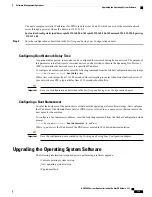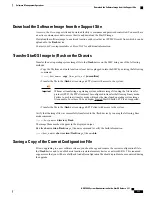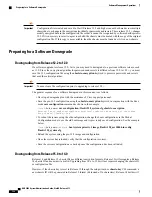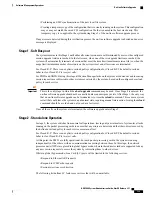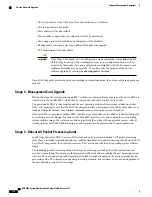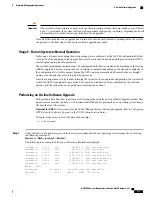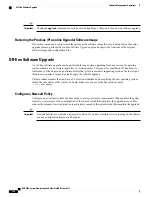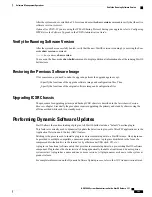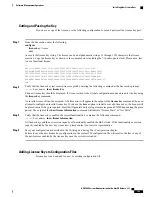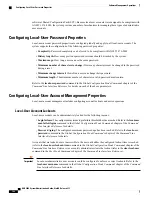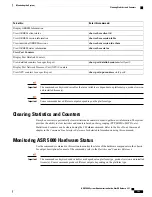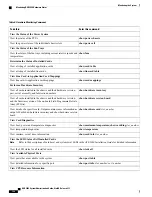
c) Configure the overload policy for this service by entering the following command:
[
context_name
]
host_name
(config-
service_type
-service)#
policy { overload { redirect ipv4_address [ weight
weight_num ] [ ipv4_address2 [ weight weight_num ]
...
ipv4_address16 [ weight weight_num ] ] | reject [
use-reject-code insufficient-resources ] } | service-option enforce }
For complete information about the above command, see the
Context Configuration Mode Commands
chapter of the
Command Line Interface Reference
.
An overload policy must be defined for each service configured in the system.
There is no explicit overload policy configuration for Closed R-P. The default overload behavior for Closed R-P is
to reject calls.
d) Repeat
step c
to configure the overload policy for another configured service.
Step 9
Return to the Exec mode prompt by entering the following command:
end
The following prompt appears:
[local]
host_name
#
Once the software upgrade process has started, any failure that results in the reboot of the system prior to the upgrading
of both SMCs may result in unexpected behavior by the system that requires manual intervention to correct.
Step 10
Save your configuration as described in the
Verifying and Saving Your Configuration
chapter.
Step 11
Begin the on-line software upgrade by entering the following command:
[local]
host_name
#
upgrade online image_url config cfg_url [-noconfirm]
The SMCs within the system load the new operating system image and the local file system is synchronized. The system
then updates all standby packet processing cards. Next, it begins to update each active packet processing card, one at a
time. The system monitors all sessions being processed by active packet processing cards. When all sessions facilitated
by a specific Session Manager task are either self-terminated or automatically terminated based on the thresholds
configured in step 8, the system migrates the packet processing cards in active mode to standby mode. Each new standby
packet processing card is upgraded and rebooted. Once booted, the card is placed back into service as an active packet
processing card.
For complete information about the above command, see the
Exec Mode Commands
chapter of the
Command Line
Interface Reference
.
Step 12
Optional:
To view the status of an on-line software process, enter the following command from the Exec mode prompt:
[local]
host_name
#
show upgrade
This command displays the status of the on-going on-line software upgrade. Once all SMCs have been upgraded, the
full configuration file is loaded, the NPUs are taken out of global bypass mode, and the system is returned to normal
operation. When the on-line software upgrade has been completed, all sessions on the system will be new and all system
statistics will have been reset.Upon completion of the software upgrade, the system will automatically begin accepting
new sessions, using the pre-existing configuration that was running. All system statistical counters will have been reset
to zero.
Aborting an On-line Software Upgrade
Abort the on-line software upgrade process by entering the following command:
[local]
host_name
#
abort upgrade [-noconfirm]
ASR 5000 System Administration Guide, StarOS Release 21.1
139
Software Management Operations
On-Line Software Upgrade
Summary of Contents for ASR 5000
Page 26: ...ASR 5000 System Administration Guide StarOS Release 21 1 xxvi Contents ...
Page 316: ...ASR 5000 System Administration Guide StarOS Release 21 1 288 VLANs VLAN Related CLI Commands ...
Page 400: ...ASR 5000 System Administration Guide StarOS Release 21 1 372 Engineering Rules ECMP Groups ...





